Jamaican bammy is a traditional flatbread that’s both delicious and easy to make. It’s made from cassava, a root vegetable that’s a staple in tropical countries. Bammy is often enjoyed with fish or as a snack on its own, and it’s known for its crispy outside and soft inside. This guide will show you how to cook Jamaican bammy favorite right in your kitchen.
Cooking bammy doesn’t require fancy equipment or rare ingredients. With just a few simple items from your pantry, you can bring the flavors of Jamaica to your table. Whether you’re cooking for family or friends, this bammy recipe is sure to impress. So, let’s get started and make your mealtime a little more exciting with the taste of the tropics!


Ingredients List
When you’re ready to make bammy, you’ll need these ingredients:
- Two pounds of cassava: This is the main ingredient. You’ll need to peel it and grate it.
- Water: To soak the cassava.
- Salt: Just a pinch to add flavor.

That’s it! These simple ingredients are all you need to start making your bammy.
Essential Kitchen Tools
Before you begin, make sure you have these tools:
- Grater: To grate the cassava into fine pieces.
- Cheesecloth or a clean kitchen towel: To squeeze out the liquid from the grated cassava.
- Non-stick pan or griddle: To cook the bammy on the stove.
- Spatula: To flip the bammy while cooking.

With your ingredients and tools ready, you’re all set to make delicious Jamaican bammy!
Preparing the Cassava
To make bammy, cassava is the star of the show. Here’s how to get it ready:
- Peel the Cassava: Use a knife to carefully remove the skin. It’s a bit tough, so take your time.
- Grate the Cassava: Once peeled, grate the cassava into a bowl. You want fine pieces, so use the smaller holes on your grater.
- Squeeze Out the Juice: Cassava has a lot of liquid, which you don’t need. Put the grated cassava in cheesecloth or a kitchen towel and squeeze out the juice. You’ll be left with a dry, crumbly mixture.
- Soak in Water: Some people like to soak the dry cassava in a little bit of saltwater. This step is optional, but it can add a bit more flavor.
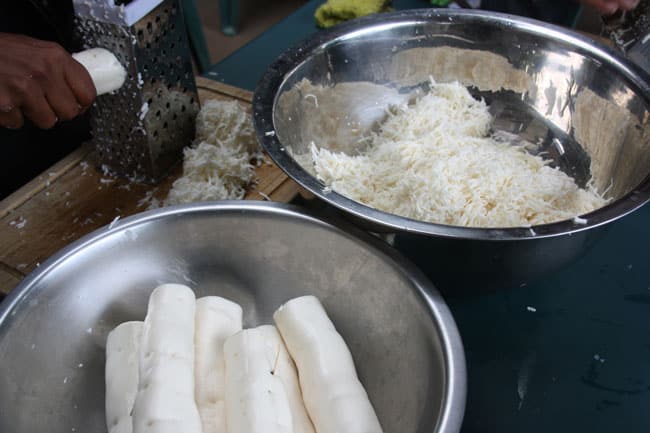
Making the Bammy Dough
Now, let’s turn that grated cassava into bammy dough:
- Mix with Salt: Take the dry cassava and sprinkle a pinch of salt over it. Mix it well.
- Form the Dough: Use your hands to press the cassava together. It will start to stick and form a dough. If it’s too dry, you can add a teaspoon of water.
- Shape Your Bammies: Divide the dough into small portions. Press each one into a flat, round shape. They should be about half an inch thick.
- Let Them Rest: Place the shaped bammies on a plate and let them sit for a few minutes. This helps them firm up before cooking.


With your bammy dough ready, you’re just a few steps away from enjoying this Jamaican delicacy!
How to cook Jamaican bammy: Step-by-step
Now that your bammy dough is ready, it’s time to cook:
- Heat the Pan: Place your non-stick pan or griddle on the stove and turn the heat to medium. Let it get warm.
- Cook the Bammy: Put a bammy round on the pan. Let it cook for about 3 to 4 minutes until the bottom is golden brown.
- Flip It Over: Use your spatula to carefully flip the bammy. Cook the other side for another 3 to 4 minutes.
- Check the Texture: The bammy should be firm and crispy on the outside. If it’s too soft, let it cook a bit longer.
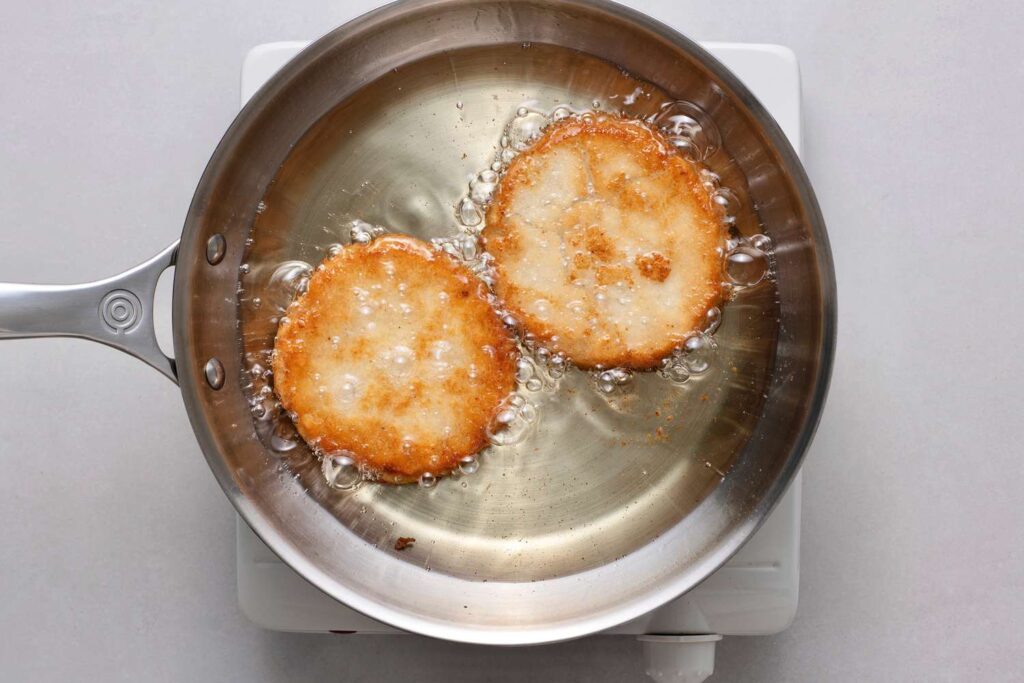
Repeat these steps for each bammy until all are cooked. Now, you’re ready to enjoy your homemade Jamaican bammy!
Serving Suggestions
After cooking your bammy, it’s time to think about how to serve it. Here are some tasty ideas:
- With Seafood: Bammy and fish are a classic combo. Try it with fried snapper or escovitch fish.
- As a Side Dish: Serve bammy instead of bread or potatoes with your meal.
- With Dips: Cut bammy into wedges and dip them in sauces like guacamole or salsa.
- Sweeten It Up: For a dessert twist, sprinkle some sugar and cinnamon on your bammy.
Bammy is versatile, so feel free to get creative with how you serve it! Enjoy your meal!

Storing Leftover Bammy
If you have leftover bammy, here’s how to store it:
- Let It Cool: Before storing, allow the bammy to cool down to room temperature.
- Wrap It Up: Use plastic wrap or aluminum foil to wrap each bammy individually. This keeps them fresh.
- Refrigerate or Freeze: Put the wrapped bammy in the fridge if you’ll eat it within a few days. For longer storage, place them in the freezer.
- Reheating: When you’re ready to eat, reheat the bammy in a pan until it’s warm and crispy again.
By following these steps, you can enjoy your bammy anytime!
Final Analysis
Making Jamaican bammy at home is a fun and rewarding experience. It’s a simple recipe that brings a taste of the Caribbean to your kitchen. By following the steps outlined in this guide, you’ve learned how to prepare the cassava, make the dough, cook the bammy, and even serve and store it.
Whether you’re enjoying it with a meal or as a snack, bammy is a versatile food that’s sure to delight you. We hope this guide has made cooking bammy easy and enjoyable for you. Remember, the best part about cooking is putting your own spin on recipes, so don’t be afraid to experiment. Grab some cassava and start making your own delicious bammy today!
FAQs
Disclosure: Our blog contains affiliate links to products. We may receive a commission for purchases made through these links. However, this does not impact our reviews and comparisons. We try our best to keep things fair and balanced, in order to help you make the best choice for you.


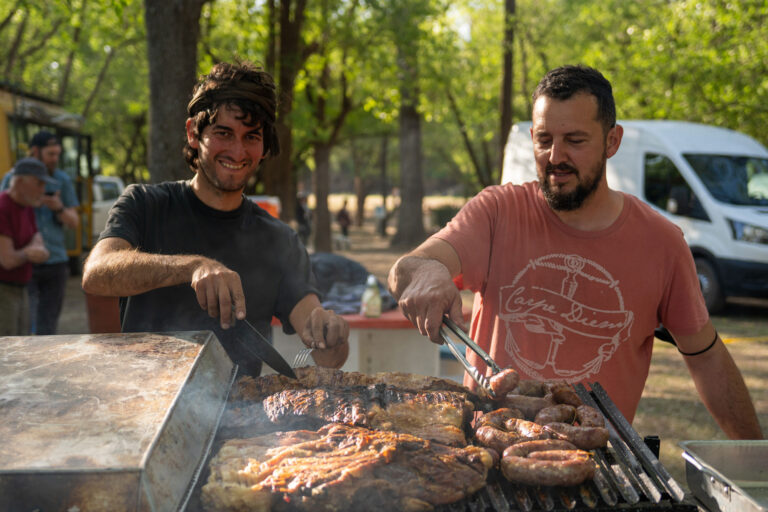


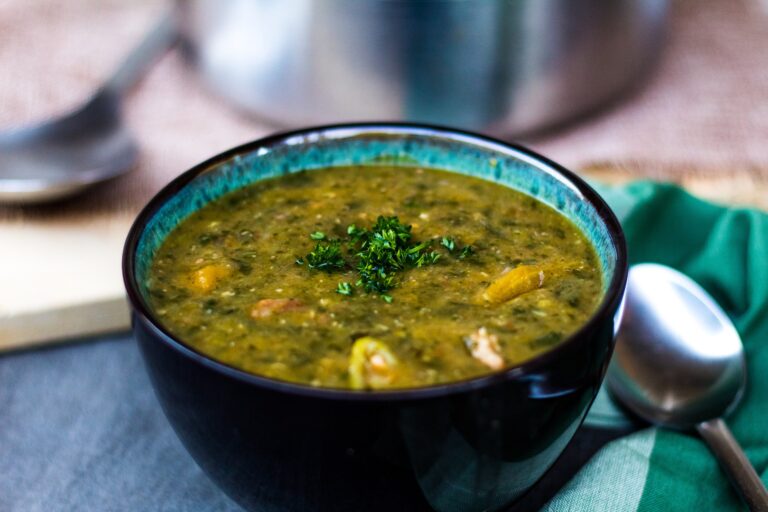
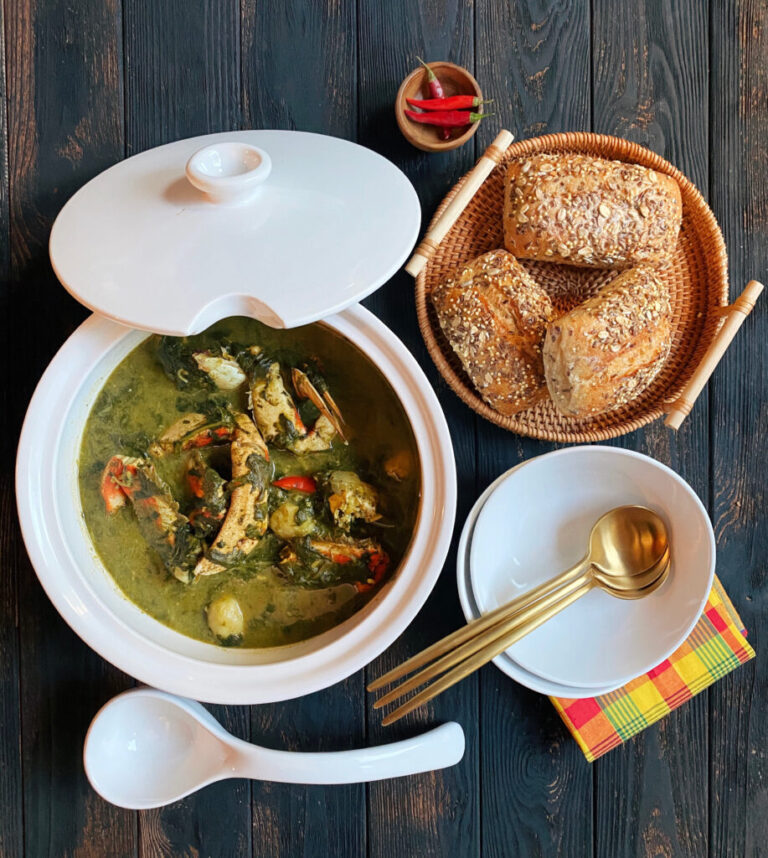

One Comment